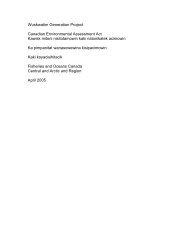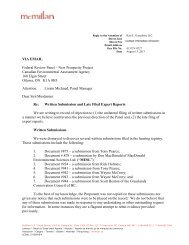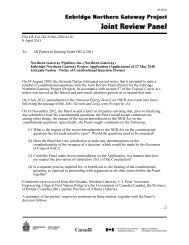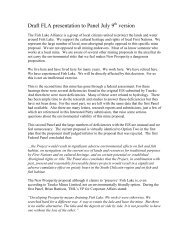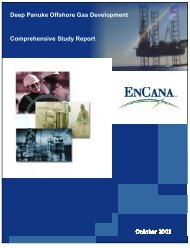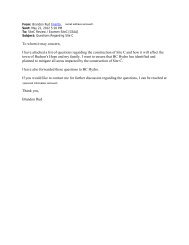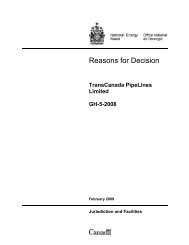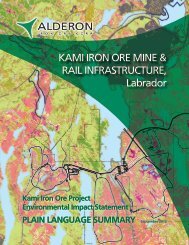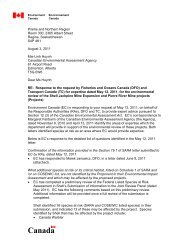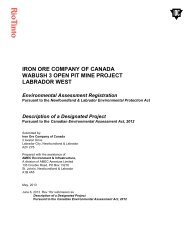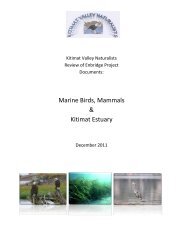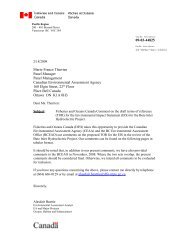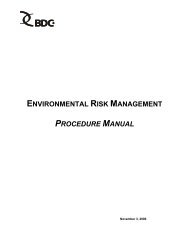BRUCE HEAVY WATER PLANT DECOMMISSIONING PROJECT
BRUCE HEAVY WATER PLANT DECOMMISSIONING PROJECT
BRUCE HEAVY WATER PLANT DECOMMISSIONING PROJECT
You also want an ePaper? Increase the reach of your titles
YUMPU automatically turns print PDFs into web optimized ePapers that Google loves.
Bruce Heavy Water Plant Decommissioning<br />
Environmental Assessment Study Report<br />
Ontario Power Generation<br />
Final Submission to CNSC<br />
2.0 ALTERNATIVES<br />
Section 16(2)(b) of the Act requires that this EA, being a Comprehensive Study, consider<br />
alternative means of carrying out the project that are technically and economically feasible and<br />
the environmental effects of any such alternative means.<br />
The DDP (OPG, 2002) assessed the alternative means of carrying out the project in three steps as<br />
outlined below.<br />
• evaluation of five decommissioning strategies (options) to select a preferred option<br />
• determination of the most effective means of carrying out the preferred option<br />
• assessment of decommissioning methods for specific structures<br />
2.1 Alternative Means Of Carrying Out The Project<br />
Five possible decommissioning strategies were identified and evaluated to select the preferred<br />
option for the BHWP Decommissioning Project. Four criteria (Safety, Environment, Cost, and<br />
Program) were considered for each of the options. Each option was given a score ranging from<br />
1 (poor) to 10 (excellent) based on its relative merit or impact for each criterion. Different<br />
weights were assigned to each of these criteria to reflect the relative importance of the criteria.<br />
Safety, both to the workforce and to the public, was assigned the highest weighting, followed by<br />
consideration of environmental effects. Cost and program (i.e., timeframe or schedule) are<br />
considered to be relatively less important and to some extent they are interdependent. The final<br />
score is the product of the individual scores and the corresponding weight. The evaluation of<br />
each option is provided in Table 2.1 and described in the following subsections.<br />
2.1.1 Option 1: Mothballing and Deferred Decommissioning<br />
Mothballing the plant would not remove any of the existing hazards and would offer no longterm<br />
improvement to the environment. However, there would be no short-term adverse effects<br />
on the environment. The plant structures and buildings would require considerable maintenance<br />
to keep them in a safe state. This is particularly important on the tall structures, which could<br />
pose a serious hazard if they are corroded by weather. Carrying out the appropriate level of care<br />
and maintenance on the plant would be expensive and pose some risk to maintenance staff.<br />
There is no benefit to be gained from delaying the decommissioning (the plant is not radioactive<br />
so delay will not reduce hazards). It is unlikely that there will be sufficient future demand for<br />
heavy water to warrant the cost and effort required to mothball the heavy water production<br />
facilities (i.e. the process equipment and related buildings). OPG’s current inventory of heavy<br />
water is sufficient to meet all of its foreseeable needs and the demand for heavy water on the<br />
export market is expected to remain low for the foreseeable future. This option received the<br />
lowest score.<br />
2-1 December 2002



